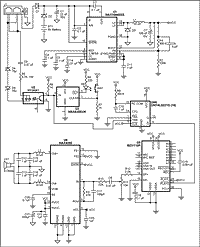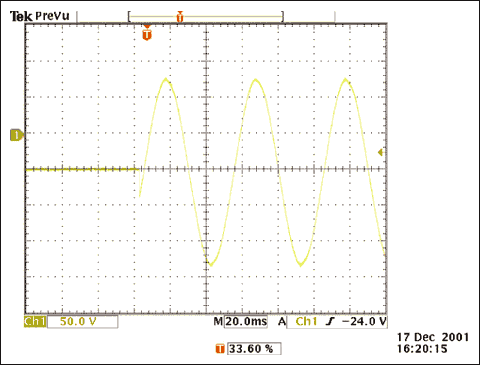
By placing a circuit in series with the telephone (Figure 1), you can customize a phone ringer without modifying the phone. The heart of the ringer is a chip-recorder IC (U5) capable of playing up to 10 seconds of telephone-quality recorded sound. A high-efficiency step-down converter (U1) allows the circuitry to operate from a supply voltage of 5V to 14V.

For larger image
Figure 1. This circuit plays up to 10 seconds of recorded sound in place of the ring from a telephone. It also indicates when someone has called.
An opto-coupler and associated front-end circuitry monitor the line, sensing when the line receives a high-voltage ringer signal (Figure 2). Zener diodes D4 and D5 prevent the on-hook voltage from acTIvaTIng the opto-coupler. Comparator U3 latches LED D6 "on" when a call is received, and a pushbutton switch (SW1) clears the comparator.

Figure 2. The ringer signal of a typical telephone exceeds 200VP-P (verTIcal scale is 50V/div).
The circuit shown in Figure 3 records up to 10 seconds of sound in the chip recorder's proprietary mulTI-level EEPROM. A switch-mode, Class D audio amplifier (U6) maintains high efficiency while delivering adequate power to an 8Ω speaker (even a PC speaker will work).

Figure 3. Using the EEPROM internal to U5 in Figure 1, this circuit records up to 10 seconds of sound.
A similar version of this article appeared in the July 25, 2002 issue of EDN magazine.
欢迎分享,转载请注明来源:内存溢出

 微信扫一扫
微信扫一扫
 支付宝扫一扫
支付宝扫一扫
评论列表(0条)